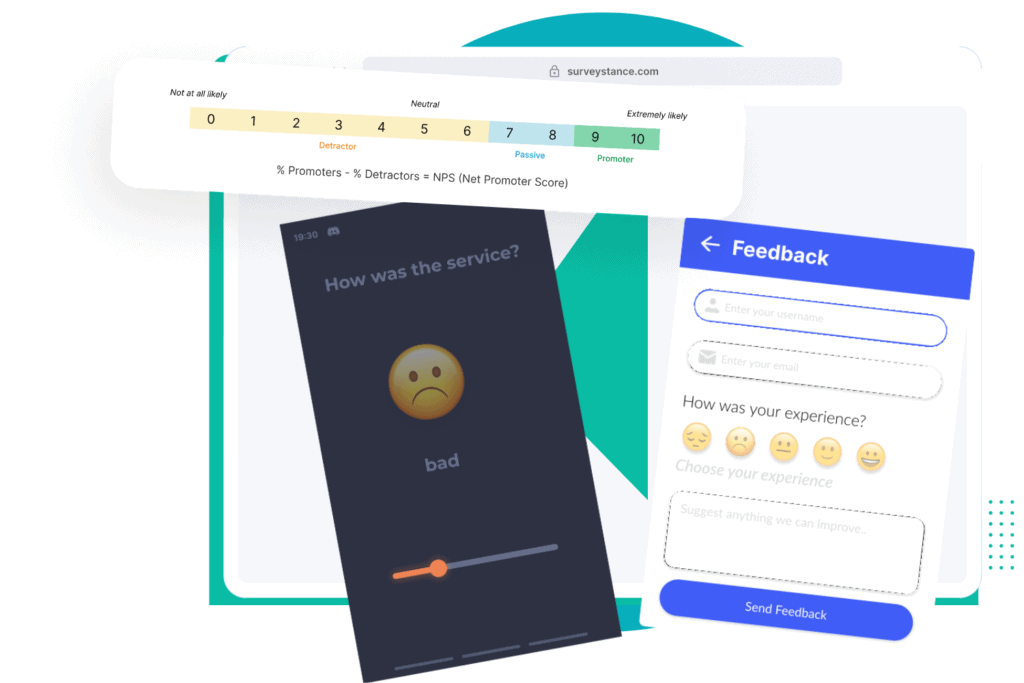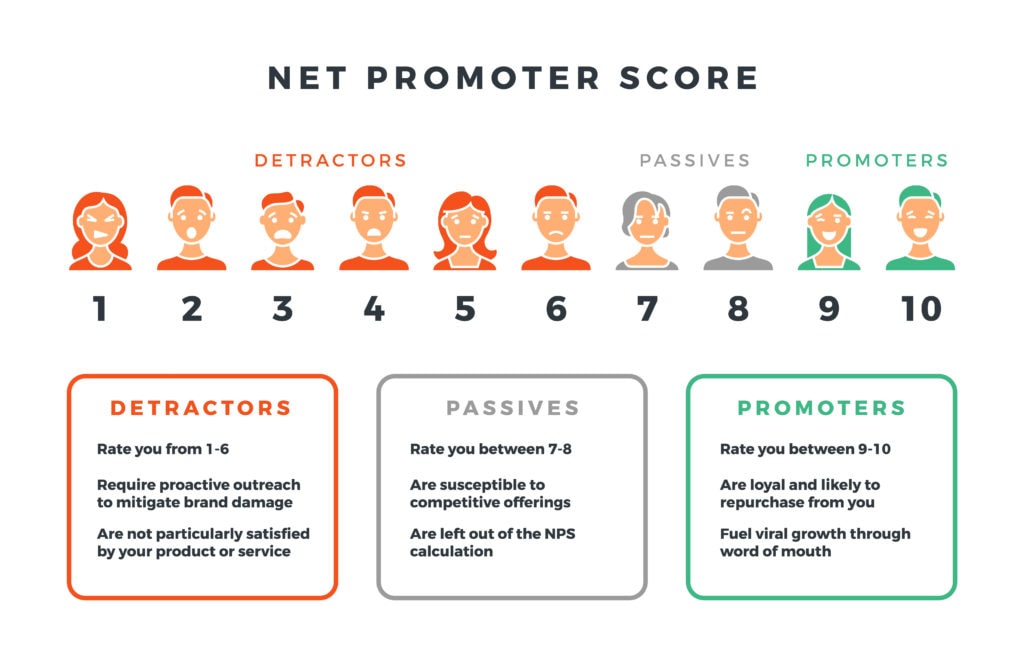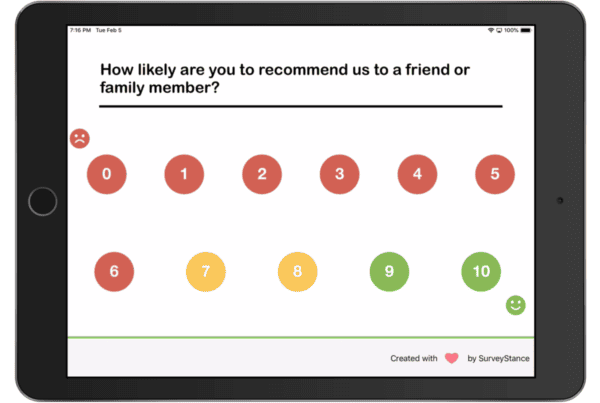




Learn about the difference between CSAT (Customer Satisfaction) vs NPS (Net Promoter Score) and the best practice of using each to collect feedback.

Do you ever have unhappy customers? You should not take that as a failure, but a great opportunity to learn. They offer a way to measure the right metrics, which is key to your business’s success, whether you are offering products or services.
Anybody who is running a successful business will give such advice. It’s best to monitor these metrics very closely as it will help you navigate towards customer satisfaction.
In the modern business world, households and firms’ relationship is a vital component of successful markets. Firms supply goods and services, while households offer the demand for these products. In other words, there are no companies without customers, and there are no customers without companies.
Whatever the case, however, everyone is a customer or end-user of some service. This is just how the world works today. Whether you are doing some shopping in a grocery store, flying with a high-end airline, or buying clothes online, you are part of a transaction with high expectations to satisfaction.

CSAT vs NPS are both Key Performance Indicators (KPIs) for many companies. And even though they are used for a similar purpose, several differences set them apart. Let us look at these differences by considering what each CSAT and NPS standard means.
CSAT stands for Customer Satisfaction and the term is often used relating to survey feedback. How happy are your customers? You answer this question using CSAT. Simply put, it is an indication of customer happiness. This is accomplished through a survey that the customer completes after an interaction such as buying a product or service, resolving an issue or a conversation between the customer and employee. The survey can come in many different forms, but the score asks a customer to rate how much they liked the experience on a scale ranging from good to bad.
CSAT is the measure that establishes the level of standards that meet your customer’s expectations. Let’s dive in deeper.
CSAT is a KPI that has a service parameter applied to measure a firm’s customer satisfaction using a percentage scale for a specific product, transaction, interaction, or any other service rendered to the customer. It is one of the most crucial tools that one can leverage picking different points within the sales cycle to comprehend how the customer feels about them.
For example, a customer may call in for assistance when encountering an issue with your product. At the end of the interaction, you can ask them a question like “How would you rate your experience with our customer care representative?” and then add on a few choices ranging from great to poor. It is important to choose your questions carefully so that you don’t confuse the customer. It would help if you made things as easy as possible to express their sentiments accurately.

Absolutely! Studies have shown that CSAT is the best KPI used to understand your customers’ needs. It all comes down to using customer feedback to improve using the data collected in these surveys.
Several customer support experts have been keen on offering the best advice to improve user experience, whether you are running an online store or a physical service station.
Amar Zagorica, a QA Analyst at randrr, says, “When it comes to online interaction, customers certainly aren’t shy about letting their opinions be known, all you have to do is listen and provide them with means of expressing themselves.” Anyone would agree with this statement as your customers need to feel safe, that what they are doing is for their benefit.
CSAT is a broad term that covers many questions that all try to uncover how satisfied current customers are with the product, or a particular interaction they just completed. It should be remembered that mildly satisfied or dissatisfied customers are less likely to complete your survey, thus skewing the results.
Charlie Cowan, the Sales Director, EMEA of Appirio
As Charlie Cowan, the Sales Director, EMEA of Appirio quoted above the CSAT is not for a new customer but for those who have already tested your product or service. You are either looking to retain them or get some good reviews from them to attract new ones. It is, therefore, crucial to making them feel comfortable. And CSAT can be a great tool to get these results.
A CSAT scale is a standardized way to calculate customer survey results from CSAT surveys. The CSAT scale is flexible and can be applied to a range of survey types. When you start collecting customer feedback with a CSAT Survey the next step is to start understanding the data.
The CSAT calculation starts by dividing all the positive responses by the total number of responses and then multiplying the results by 100. The result comes as a percentage showing two decimal places.
Fie instance, if your received 30 positive ratings from a total of 50 responses, your CSAT Score would be 70%
35/50 x 100 = 70%
A CSAT score of 80% of above is considered to be a good CSAT score. It shows that most of your customers are getting what they expect. The ratings are very relevant, but they are not everything you need to understand how your customers feel. The intent is to highlight opportunities in certain areas of the customer journey, but it may not give you a holistic view of how the customer feels about the business as a whole.





NPS stands for Net Promoter Score. When comparing CSAT vs NPS it’s often you will see these 2 survey types used together. While they do have many things in common a Net Promoter Survey is a very specific type of survey. NPS is used to measure a customers long-term happiness and customer loyalty by asking a question similar to:
On a zero-to-ten scale, how likely is it that you would recommend us (or this product/service/brand) to a friend or colleague?
Net Promoter Score represents your customer’s perception index ranging from -100 to 100. It predicts how loyal customers are to a brand and how likely they are to promote the product, service, or brand. Since NPS is standardized and the question asked is similar for all companies it can be used to benchmark your company against others. Overall when comparing CSAT vs NPS these are the biggest factors that should be considered.
NPS can be very effective for companies to use as a benchmark for customer happiness. Just like anything there are pros and cons to consider.
Let’s begin with the scale you should use for NPS. The NPS score is based on a scale of 0 to 10 with 0 being the lowest score and 10 being the highest score.
You calculate the final NPS score by subtracting the percentage of detractor customers from the percentage of promoter customers. The results come as a score between -100 and 100, which is the Net Promoter Score. The best score is 100, which may be hard to achieve.
Promoters are the customer who selects the scale 9 to 10. They are extremely happy with your services and are likely to recommend it.
Passive are those who selected the scale 7 to 8. They lie around the neutral side. They may not have been satisfied with expectations, but they are not completely dissatisfied.
Detractors are the customer who gave a score of 0-6. These customers are not happy and would not recommend your product or services.


Use the iPad and Kiosk to place within your company to collect NPS feedback from customers or employees.
Survey will loop to the first question after each completion.
After the NPS question is answered, ask follow up questions to get additional feedback.
Customer Satisfaction is a parameter that has been used for a long time to measure customer satisfaction. It is mostly conducted on a scale of 1 to 5. It was not until 2003 that the Net Promoter Score (NPS) came into the picture to measure customer loyalty.
The main difference between CSAT and NPS is that CSAT is applied on a short-term loyalty measure, while NPS is used for a long-term review of loyalty and happiness. Many experts suggest that NPS is a more reliable and accurate approach than CSAT. NPS can be associated directly with the overall success, progress and growth of your organization.
CSAT surveys are convenient for researchers. It is mostly applied where immediate feedback is expected. It is a great solution for establishing immediate customer interaction with direct feedback. To learn more check out this really helpful guide on CSAT vs. NPS.
The best results come from combining CSAT vs NPS survey options. This customer feedback strategy will help get a baseline score like NPS with additional feedback that can be helpful in understanding actionable insights. In addition to combining CSAT and NPS together, applying conditional logic can be a great tool to ask relevant questions to your customers.
Question 1 – How likely is it that you would recommend us (company, product or service) to a friend or colleague?
IF Negative -> What caused your poor experience?
IF Positive -> What did you like most?
A survey structure similar to this will allow you to capture the NPS and seek additional information about the customers feedback.
Modern technologies like SurveyStance is designed to combine NPS and CSAT as well as other survey types together to maximize customer survey response rate and data collected.
SurveyStance offers 3 integrated services to capture customer regardless of CSAT vs NPS. Our OneClick Feedback can be used to embed CSAT and NPS survey within your Email Signatures, Websites and more! Also, check out our iPad Based NPS Feedback Kiosk can capture customer and employee feedback in real time.
Let’s forget about CSAT vs NPS for a minute. Customer Feedback in general matters because without customers you would not have a business. If you do not understand what your customer’s feedback then you are flying in the dark with how to operate.
Repeat customers can be an excellent way for you to sell more. If your current customer is happy, you have more chances of having them come again to buy. Even better, they will easily recommend your products to other customers, including their families and friends. Word of mouth marketing is the best way to grow your business.
The most important thing is that you must analyze customer feedback at every juncture regardless of CSAT vs NPS. It will help you decide their long-term loyalty to the organization. NPS establishes the probability of a customer purchasing the organization again or unhappy.
Each of these parameters is crucial for a company. For instance, CSAT looks at key specific areas that need improvement while NPS offers and overall picture of customer satisfaction. Also, CSAT is more versatile, while NPS is very limited.
Net Promoter® NPS® and the NPS-related emoticons are registered trademarks of Bain & Company, Inc.
Customers expect a good experience from start to finish, which should be met. If you are the service provider, your customers expect the highest quality, design, and communication until the process is complete. These expectations form the foundations of a successful business, which must be well rooted in your mind.
But the biggest question is, how do you achieve this? It starts by putting processes and measurements in place, learning from your mistakes, and improving them with every opportunity you get. Not for a short period of time but continuously. It is also critical to build a good customer retention policy, ensuring that your loyal and repeat customers get the best quality.
It’s now time to get into the two common acronyms used by business owners worldwide; Customer Satisfaction Score (CSAT) and Net Promoter Score (NPS). By leveraging these two types of surveys, it will give you a better and more holistic understanding of how your customers feel about your company.
Let’s look at CSAT vs NPS in more detail.
Setup your account in less than 4 minutes.
😍 No Credit Card
😍 Full Access